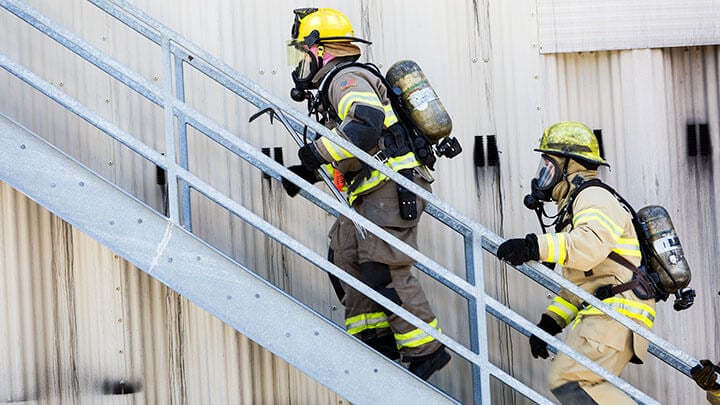The Future of Life Safety and Security Equipment

21 Jan 2025
Emerging Innovations are Redefining the Industry
The life safety and security industry is rapidly transforming with innovations in surveillance, access control, cybersecurity, fire safety, and emergency response. As a result, manufacturers are constantly evolving to meet emerging challenges by integrating cutting-edge technologies to improve safety and efficiency, while protecting people and safeguarding entire organizations. In this blog post, I’ve highlighted some of the key innovations and trends that are driving the greatest impact on the industry.
Advancements in Surveillance Systems
- AI-Powered Surveillance: Artificial intelligence (AI) has revolutionized surveillance, allowing cameras to detect unusual activity, recognize faces, and predict threats. These systems analyze patterns to alert security teams in real time, ensuring swift responses.
- Enhanced Video Analytics: Video analytics has become more precise, allowing systems to track movement, monitor crowd density, and identify objects. With machine learning, these systems improve with more data, enhancing accuracy.
- High-Resolution Cameras: High-definition cameras, including 4K and 8K, provide crystal-clear footage, making it easier to identify individuals and capture critical details.
Innovations in Access Control
- Biometric Authentication: Biometric systems—fingerprints, facial recognition, and iris scanning—offer more secure access than traditional methods like keycards. These systems rely on unique biological traits that are difficult to replicate.
- Mobile Access Solutions: Mobile access control allows users to open doors with their smartphones, providing a secure and flexible alternative to physical cards.
- Cloud-Based Access Control: Cloud-based systems enable remote management, scalability, and real-time monitoring, ensuring security measures are always up to date.
Strengthening Cybersecurity
- Integrated Cyber-Physical Security: Integrated security systems protect both physical and digital assets, ensuring cyber threats don’t compromise physical security infrastructure.
- Advanced Threat Detection: AI and machine learning are used to detect threats in real time by analyzing data for anomalies, enabling proactive responses.
- Zero Trust Security Models: The Zero Trust model continuously monitors and authenticates all users and devices, assuming no entity is inherently trusted.
Fire Safety Innovations
- Smart Fire Detection Systems: Smart systems use IoT technology to provide faster, more accurate fire detection, reducing false alarms and alerting emergency services instantly.
- Fire Suppression Technologies: Advanced fire suppression technologies, like water mist and clean agents, suppress fires quickly and with minimal environmental damage.
- Integrated Fire Safety Management: Integrated systems combine fire detection, suppression, and evacuation into one cohesive solution for better coordination and response.
Enhancing Emergency Response
- Real-Time Communication Systems: Modern systems use mobile apps, social media, and emergency alerts to share real-time information, helping security teams and responders act quickly.
- Drone Technology: Drones equipped with thermal imaging are being used to assess emergency scenes from the air, improving coordination and locating individuals in low-visibility conditions.
- Emergency Management Software: Software solutions help coordinate emergency responses, track incidents, and allocate resources efficiently to improve response times.
The Impact of 5G on Security and Privacy
- 5G Technology in Security: High-speed connectivity and low latency enable advanced solutions like real-time video streaming and improved IoT integration, revolutionizing security capabilities.
- Privacy Concerns and Compliance: Organizations must address growing privacy issues, ensure regulatory compliance, and protect individuals' rights to maintain public trust.
- Continuous Innovation and Collaboration: Investing in research, development, and stakeholder collaboration is crucial for staying ahead of emerging security threats and challenges.
Key Takeaways
The life safety and security industry is undergoing a significant transformation, driven by advancements in technology and the need to address evolving challenges. From AI-powered surveillance systems to cloud-based access control and 5G-enabled solutions, these innovations are reshaping the way we protect people, assets, and organizations. As these trends continue to evolve, staying informed and proactive will be essential for leveraging these technologies effectively. By embracing these advancements, the industry can ensure a safer, smarter, and more resilient future for everyone.

